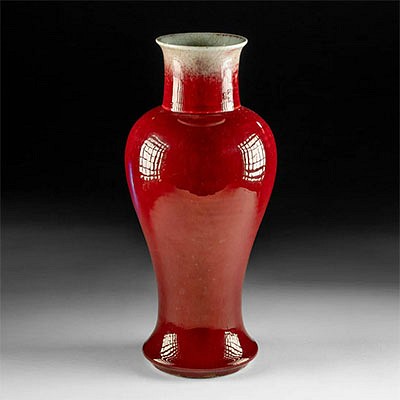Exhibited 3rd C. Roman Glass Flask Stylized Grapes
Lot 52
About Seller
Artemis Fine Arts
686 S Taylor Ave, Ste 106
Louisville, CO 80027
United States
Selling antiquities, ancient and ethnographic art online since 1993, Artemis Gallery specializes in Classical Antiquities (Egyptian, Greek, Roman, Near Eastern), Asian, Pre-Columbian, African / Tribal / Oceanographic art. Our extensive inventory includes pottery, stone, metal, wood, glass and textil...Read more
Categories
Estimate:
$2,800 - $4,800
Absentee vs Live bid
Two ways to bid:
- Leave a max absentee bid and the platform will bid on your behalf up to your maximum bid during the live auction.
- Bid live during the auction and your bids will be submitted real-time to the auctioneer.
Bid Increments
| Price | Bid Increment |
|---|---|
| $0 | $25 |
| $300 | $50 |
| $1,000 | $100 |
| $2,000 | $250 |
| $5,000 | $500 |
| $10,000 | $1,000 |
| $20,000 | $2,500 |
| $50,000 | $5,000 |
| $100,000 | $10,000 |
| $200,000 | $20,000 |
About Auction
By Artemis Fine Arts
May 11, 2023
Set Reminder
2023-05-11 10:00:00
2023-05-11 10:00:00
America/New_York
Bidsquare
Bidsquare : Fine Antiquities, Asian, Pre-Columbian, Ethnographic Art
https://www.bidsquare.com/auctions/artemis-gallery/fine-antiquities-asian-pre-columbian-ethnographic-art-12771
Classical antiquities, ancient and ethnographic art from cultures encompassing the globe. Artemis Fine Arts info@artemisgallery.com
Classical antiquities, ancient and ethnographic art from cultures encompassing the globe. Artemis Fine Arts info@artemisgallery.com
- Lot Description
**Originally Listed At $1500**
Roman, Holyland, The Levant, Imperial Period, ca. 3rd century CE. A lovely ancient glass jar the ovoid body of this flask was blown in a two-part mold to create a stylized grape pattern rows of contiguous hemispherical knobs across the surface and a pair of leaves placed on opposite sides of the shoulder under the neck ring. The seam visible along the sides; the disk-shaped bottom was blown in a separate mold. These grape cluster shaped vessels were very popular in the Levant region of the Roman Empire, and were rendered realistically with asymmetrical sides and conical base, or in a more stylized manner, such as this example. Size: 2.5" Diameter x 5" H (6.4 cm x 12.7 cm)
The Romans enjoyed making glass vessels in novel shapes, and small bottles or flasks mold-blown in the form of dates, bunches of grapes, pinecones, or cedar cones were among their favorites. Grape flasks were made in both the eastern and western Mediterranean from the first to the fourth century CE in various styles, sizes, and shapes. Vessels originating in the eastern Mediterranean typically do not have handles. The earlier ones generally are smaller (under 10 cm) and more naturalistically rendered. Later vessels, like the present flask, are more stylized and likely to have a "collar" at the base of the neck.
Exhibited in "Ancient Glass: Selections from the Richard Brockway Collection" at the Hallie Ford Museum of Art at Willamette University, Salem from March 10 to May 19, 2007 and "Glass of the Ancient World" at the Vero Beach Museum of Art, Florida from October 11 to December 28, 2008.
Provenance: private Vero Beach, Florida, USA collection, acquired before 2003
All items legal to buy/sell under U.S. Statute covering cultural patrimony Code 2600, CHAPTER 14, and are guaranteed to be as described or your money back.
A Certificate of Authenticity will accompany all winning bids.
We ship worldwide and handle all shipping in-house for your convenience.
#177408Professionally repaired from 3 large pieces. Stable hair line fissures on body. Mineral and earthen encrustations on surface. Great areas of iridescence throughout.Condition
- Shipping Info
-
All shipping is handled in-house for your convenience. Your invoice from Artemis Gallery will include shipping calculation instructions. If in doubt, please inquire BEFORE bidding for estimated shipping costs for individual items. In most cases Artemis Gallery cannot ship to Australia and Germany, please inquire before bidding.
-
- Buyer's Premium



 EUR
EUR CAD
CAD AUD
AUD GBP
GBP MXN
MXN HKD
HKD CNY
CNY MYR
MYR SEK
SEK SGD
SGD CHF
CHF THB
THB














